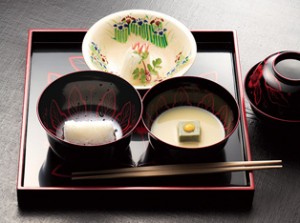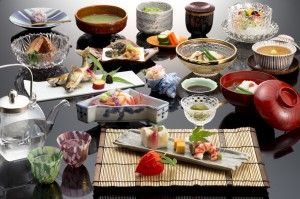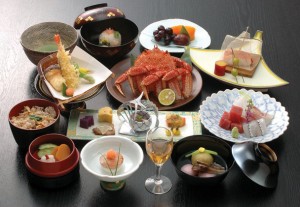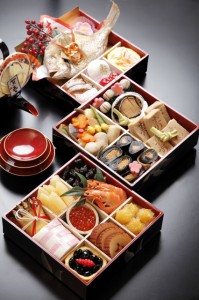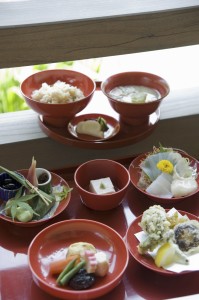
魚介類や肉類を用いずに、大豆加工品や野菜、海草などの植物性食品だけを使った料理。これには、仏教の禅宗に伝わる精進料理と、黄檗山万福寺に伝わる普茶料理があります。
Shoujin-ryouri
Abstaining entirely from the use of any meat or fish, shoujin-ryouri is an all-vegetarian diet of soybean products, vegetables, seaweed, and rice. The two best-known schools are the shoujin-ryouri of Zen Buddhism and the fucha-ryouri served at the Zen Oubakuzan Manpukuji.

